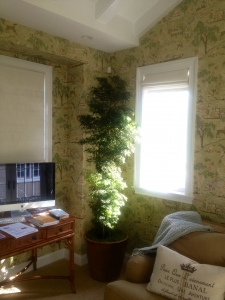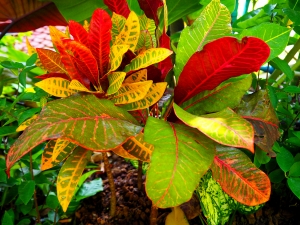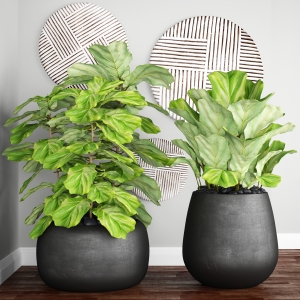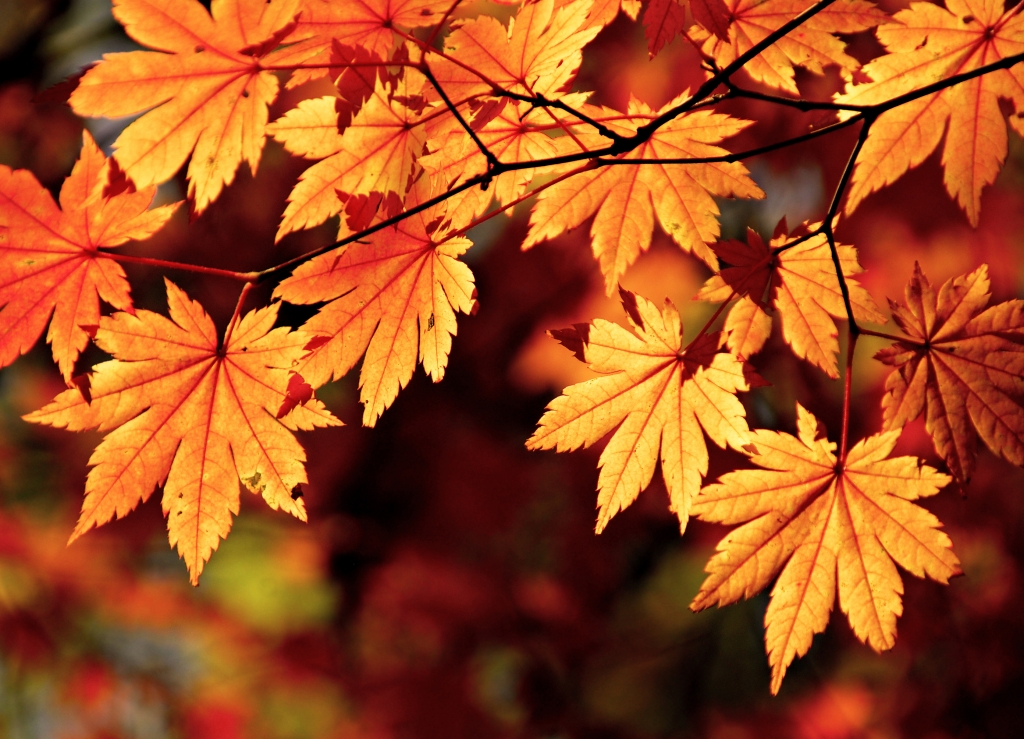Dive into Fall with 4 decorative indoor plants. In Southern California the transition from seasons is barely noticeable with an abundance of evergreen trees that give an illusion summer lasts forever. Yes, there are some spattering of trees and plants dusting the landscape for more of the Fall feel, spicing neighborhoods with colorful leaves of orange, red and yellows.
For the indoors, its fun to add some plants that create a cozy feeling in this more temperate zone. Colors of white, red, gold, and yellow along with beautifully shaped leaves that resemble maples or oaks, can spruce up the home or office. Aralias, crotons, ficus lyratas and coffee plants are the perfect foliage to add a bit of autumn for a bit of coziness in the home.

ARALIA
Aralias are quite striking and have beautifully shaped leaves and belong to the Araliacae family of more than 70 species. The Aralia elata, or better known as the Japanese Angelica tree, has long divided large leaves. The sprouts have medicinal qualities and are used in some Asian cuisines. For ornamental purposes, certain varieties can be edged in creamy white or gold; some actually turn red and yellow in the fall. And certain specimen types are unique and exotic looking with thick, woody, curving trunks. Also look for these unique variegated types – ‘Silver Umbrella’, ‘Aureovariegata’, ‘Golden Umbrella’ or ‘Variegata’. Caution for those with pets or children, the variety called Ming Aralia has irritating agents that can cause oral and skin allergic reactions.
Care: Regular watering is necessary, but the soil must dry out first since they do not tolerate soggy soil. During spring and summer feed a slow-release fertilizer.

CROTON
Beautifully colored plants, crotons, Codiaeum variegatum, bring out the true color of fall with their variety colors that range from green, variegated, orange, red, yellow, cream, pink and yes, black. They have a wide variety of leaf shapes and colors. They can be short or long, think or thick and even twisted or a combination of all. Be sure to check the variety and determine their lighting needs. Some varieties need high light and others medium to low light. Usually the more variegated the plant, the higher the need for light. Crotons don’t like to be moved, so best to find a spot where it doesn’t need to be moved frequently. When bringing home from the nursery, it might loose its leaves from the shock. Maintain proper care and it will grow its leaves back.
Care: It is a tropical plant and requires some humidity. Place on a pebble tray with water or regular misting will keep it happy. Water when the container’s top soil is dry to the touch and enough so it flows out the bottom. Keep away from drafts and cold spots below 60°F.

FICUS LYRATA
Commonly called the fiddle-leaf fig, Ficus lyrata makes a wonderful Fall-type statement inside a home or office with its lovely shaped leaves. The heavily veined leaves are in a gorgeous violin shape, fanning out to display their beauty. The tall, upright plant are native to the tropics and love very warm, wet conditions. Luckily they are tough plants and can thrive in less-than-perfect growing conditions. Their tall stature makes them a great candidate for floor containers and should be placed in areas that show off their fabulous form of 6ft tall or more. A couple of attractive specimen plants are ‘Compacta’ and ‘Suncost’ cultivars with a more bushier appearance.
Care: Ficus lyrata requires bright, filtered light. If placed in an eastern window, it can tolerate some full sun. Too dark of a space will stunt the growth of the plant. The soil needs to be kept moist and they like daily light misting. It will suffer from root rot if left in standing water or prone to fungal disease if water stays on sitting on leaves. Use fast draining soil to avoid too much water. Ficus lyrata really doesn’t require fertilizer. But feeding with a week solution through the spring growing season keeps a healthier plant. Lack of air flow through the leaves can cause leaf-spotting and fungal diseases. Keep the plant well-trimmed and remove any dead leaves and twigs regularly.

ARABICA COFFEE PLANT
Coffee arabica is the actual plant that produces beans for coffee and makes an exceptional indoor plant for fall with its beautiful leaves. A mature plant may have beans displayed after flowering. The beans themselves go from green to yellow to orange, then ripen to a deep red, a colorful array splashed among the deep green leaves. The beans can be roasted and then percolated into a nice brew. The plant is considered to be the easiest and hardiest of the indoor plants and can grow up to 6ft tall. They like bright indirect lighting and warmer temperatures that stay above 65°F. Keep the plant away from drafts in the winter.
Care: The soil of the coffee plant needs to stay moist but not soggy. The soil and the container must drain well. They love humidity, so setting the plant on a water-filled pebble tray is ideal with additional days of misting. Water less in the winter. Light fertilizing every 2 to 3 months in the spring and summer helps keep the plant healthy. Prune the plant in early spring for best results.







